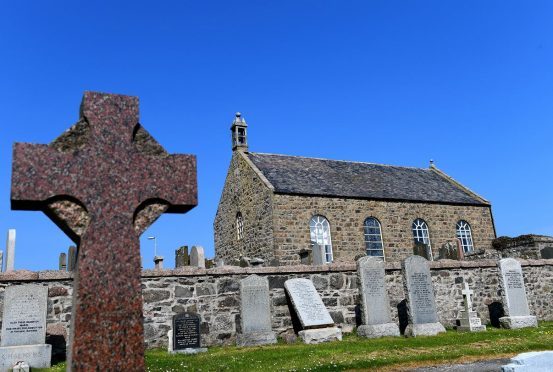The future of an historic Aberdeenshire kirk hangs in the balance after parishioners voted to close its doors after more than 200 years.
It has been part of the Ellon landscape since the 1800s, but Slain’s Kirk, part of the town’s parish church, now faces being shut forever after parishioners voted to cede control of the property.
A task group had been set up to determine the future of the building, which is currently closed to the public due its state of disrepair, as it has become financially unviable for the parishioners to continue to maintain it.
Parishioners were asked to decide whether they wished to retain responsibility for the building and fund £125,000 in repairs through grants and donations.
The other option on the table was to pass control of the property back to the Church of Scotland.
The Church could then sell the building or lease it to other community groups – with the congregation continuing to pay the ongoing running costs – estimated at about £9,000 – in the meantime.
Over the past week, 185 parishioners took part in a ballot to decide the kirk’s future, with 120 voting to cede responsibility back to the Church.
Lynn Paterson, public relations officer at the parish, said the Church’s general trustees would now hold discussions on the kirk’s future.
She said: “The Church of Scotland is the actual owner of the kirk so it will now go to Edinburgh for them to make a decision.
“They have already done surveys on the building so that may well cut down the time that it takes for something to be done.
“I can’t really comment personally but it’s the will of the people and they have had the opportunity to view the proposals.”
There are currently around 1,800 members of the church, but numbers have dwindled during recent years which is likely to impact on the level of donations in the longer term.
If the trustees decide the parish church is no longer financially responsible for the property, it is thought they may want to sell the building or look at further community use.
However if it is unable to pursue these options, it would still be the responsibility of the local congregation to maintain.
Although closed to the public, maintenance costs would still need to be upheld. And they could prove prohibitive.
